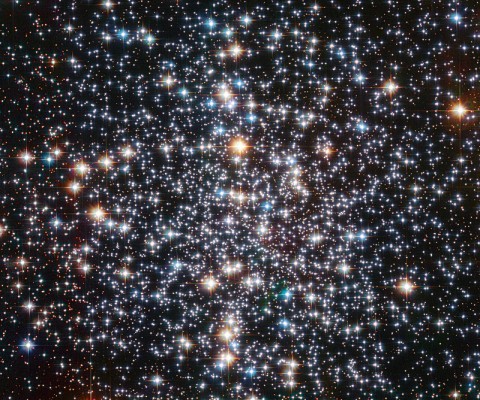NASA’s Goddard Space Flight Center
 Greenbelt, MD – This sparkling picture taken by the NASA/ESA Hubble Space Telescope shows the center of globular cluster M 4. The power of Hubble has resolved the cluster into a multitude of glowing orbs, each a colossal nuclear furnace.
Greenbelt, MD – This sparkling picture taken by the NASA/ESA Hubble Space Telescope shows the center of globular cluster M 4. The power of Hubble has resolved the cluster into a multitude of glowing orbs, each a colossal nuclear furnace.
M 4 is relatively close to us, lying 7200 light-years distant, making it a prime object for study. It contains several tens of thousands stars and is noteworthy in being home to many white dwarfs — the cores of ancient, dying stars whose outer layers have drifted away into space.

Amateur stargazers may like to track M 4 down in the night sky. Use binoculars or a small telescope to scan the skies near the orange-red star Antares in Scorpius. M 4 is bright for a globular cluster, but it won’t look anything like Hubble’s detailed image: it will appear as a fuzzy ball of light in your eyepiece.


